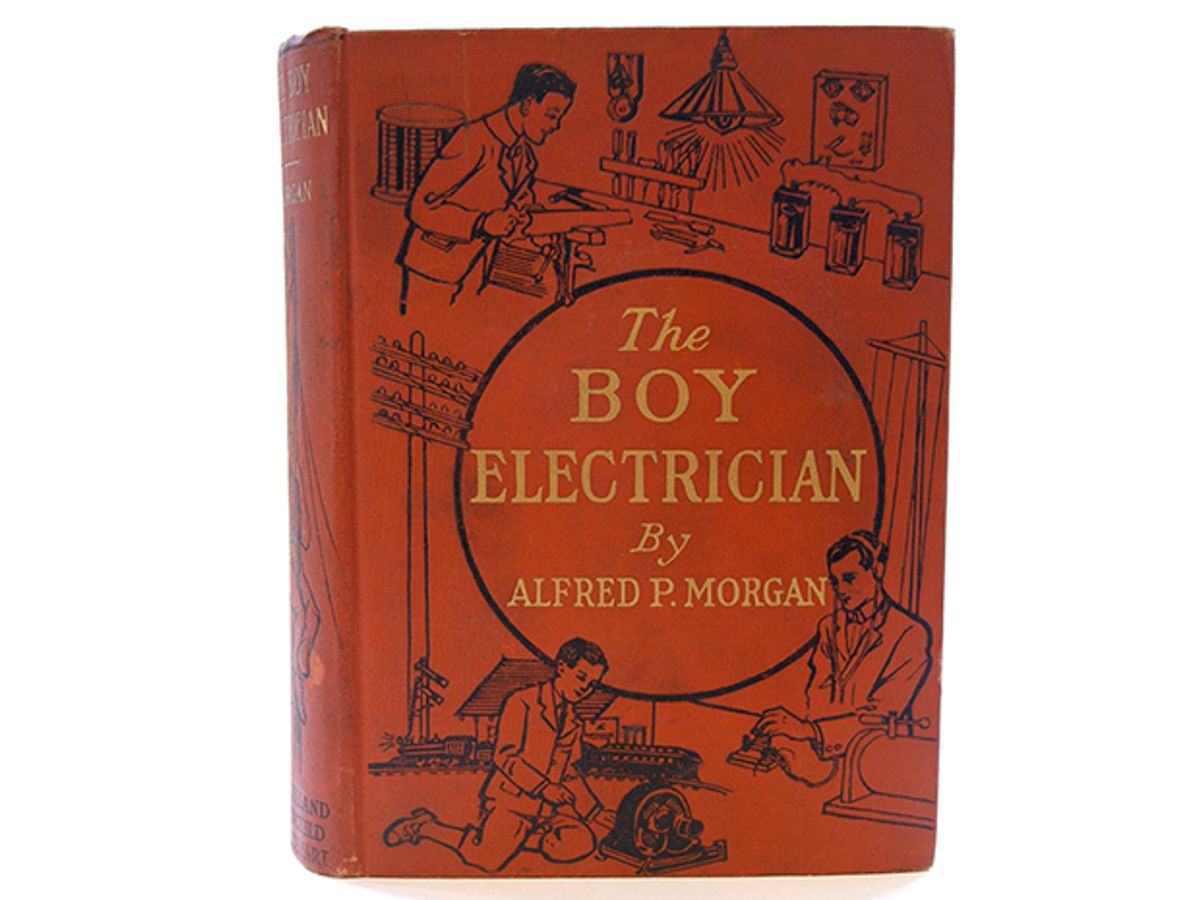Recently, I was looking for something online, or probably browsing aimlessly, when I happened on a name I hadn’t thought of since I was a child: Alfred P. Morgan. Someone had uploaded a digitized version of The Boy Electrician. I was instantly swept back more than half a century to my local library. In my mind I saw the familiar metal shelving and the blue-gray binding of my favorite book, also written—and illustrated—by Morgan: The Boys’ First Book of Radio and Electronics.
I remember how often I went back to that little library, enthralled by Morgan’s descriptions in this 1954 book of radios and the like, things that could be built using household parts and a few easily obtained electronic components, like vacuum tubes. Alfred P. Morgan had had a great influence on my childhood, but for all these years, I had forgotten him.
A quick Internet search revealed that Morgan was an electrical engineer with a degree from MIT. He lived in Upper Montclair, N.J., and as a child learned about electricity by visiting with Thomas Edison and Nikola Tesla. He eventually wrote more than 50 books, mostly for children and mostly about electrical things. Perhaps the word boy is in many of his titles because the Morgans had three sons. In the 1970s the books were retitled to remove the gender bias.
Many are still available from various publishers, and I found a number of Web sites where people proudly display the devices they have made based on Morgan’s descriptions. In fact, you can still buy kits with parts and plans for Morgan’s radios. However, I suspect that they are built by older people reliving the past rather than by children dreaming of the future.
Browsing the digitized version of The Boy Electrician was like opening a time capsule. How the world has changed since 1913, when Morgan published his hand-drawn illustrations of electronic apparatus! But my reverie soon turned to concern. Are there comparable tomes today that will arouse in children a passion for electronics? Maybe popular children’s books today instead have titles like Boys’ and Girls’ First Book of Hedge Fund Management. The world is so very much more complicated today. I worry: Has the wonder that made Morgan’s books possible disappeared?
As a child I thought I understood the world of science. I even remember reading and presumably understanding articles in Scientific American. Now I confess that I am challenged. Not only is there so much more to try to understand now, but worse, I no longer understand the things I used to think I understood. For example, in Morgan’s book there is a drawing of a battery (which you could make) connected to a wire carrying current near a compass needle. Well, the needle deflects, obviously. But now I ponder: Why? How does the needle know that there is a current nearby?
Even in college, as I studied electrical engineering, I never worried very deeply about such things. What exactly is an electric or magnetic field? A dangerously shallow knowledge of quantum electrodynamics has clouded the issue, and the more I read the less I understand. I used to think I understood the atomic model—electrons orbiting around neutrons and protons. Now the so-called standard model for particle physics has 12 fundamental particles with the forces between them mediated by another dozen obscure particles, and all of it acting according to an equation that takes multiple pages to print, yet is regarded as incomplete. I wonder if schoolchildren can get excited about something like the Z-gauge boson.
It’s not that I want to return to the simplicity of the past. Complexity is a good thing. In complexity lies enormous potential. Imagine how constrained our profession would be if we could use only simple batteries and tubes. But Morgan’s book has directions for putting together your own telephone from household parts. Could there be comparable instructions for making your own cellphone? I think not. Much has been gained, but something has also been lost.

